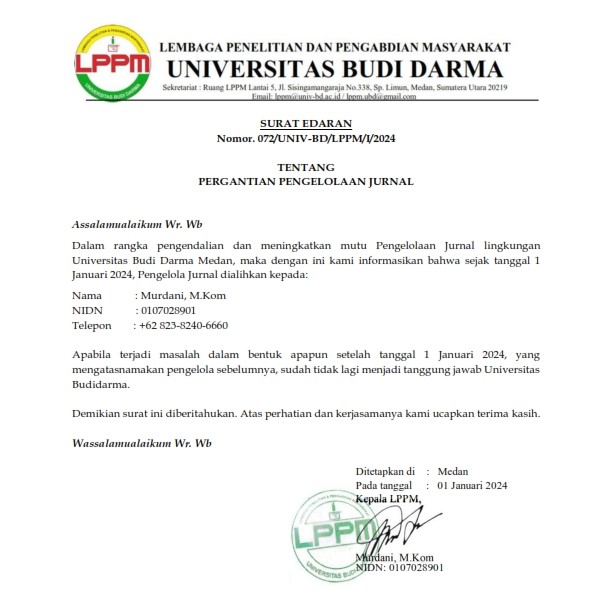Implementation of K-Means and Agglomerative Hierarchical Methods to House Clusterization
DOI:
https://doi.org/10.30865/mib.v6i2.3573Keywords:
K-Means, Hierarchical, Agglomerative, Single Linkage, SilhouetteAbstract
People in general will think that building a house with a larger building area will cost more than building a house with a smaller building area. This view is not always correct because one of the factors that affect the size of the cost depends on the size of the building and the ratio of the mixture between cement, sand and lime. The smaller the cement mixture for buildings, the smaller the costs will be. Based on this case, the researchers grouped the data (clustering) using Euclidean distance to measure the distance between points. Grouping 200 data based on 2 features, namely the amount of cement and the amount of costs that do not have a label. The results showed that clustering with the K-Means method was able to group 200 data into 3 groups with the results of group one as many as 50 data, group 2 as many as 50 data, group 3 as much as 100 data with a computation time of 0.444 seconds and silhouette 0.82 while the results of clustering research using the Agglomerative Hierarchical method with a single linkage shows 100 data in group 1,50 data in group 2, 50 data in group 3 with a computation time of 3.22 seconds and silhouette 0.51
References
D. I. Pratama, “Analisis Anggaran Pelaksanaan Pembangunan Rumah Tinggal (Studi Kasus: Rumah Tipe 50/97 di Perumahan Dian Arta – Bangunjiwo, Bantul),†2018.
V. L. Deanggi, A. S. B. Nugroho, and F. Siswanto, “Pengaruh Biaya Prasarana, Sarana, Utilitas Dan Overhead Terhadap Biaya Produksi Unit Bangunan Pada Perumahan Mewah Di Yogyakarta,†INERSIA lNformasi dan Ekspose Has. Ris. Tek. SIpil dan Arsit., vol. 15, no. 2, pp. 72–83, 2019.
A. Halim, “Perbandingan kuat tekan dan kuat geser spesi tembok yang digunakan masyarakat,†vol. 20, no. 1, pp. 1–5, 2012.
K. Khomsatun, D. Ikhsan, M. Ali, and K. Kursini, “Sistem Pengambilan Keputusan Pemilihan Lahan Tanam Di Kabupaten Wonosobo Dengan K-Means Clustering Dan Topsis,†J. Nas. Pendidik. Tek. Inform., vol. 9, no. 1, p. 55, 2020.
G. Gustientiedina, M. H. Adiya, and Y. Desnelita, “Penerapan Algoritma K-Means Untuk Clustering Data Obat-Obatan,†J. Nas. Teknol. dan Sist. Inf., vol. 5, no. 1, pp. 17–24, 2019.
S. Handoko, F. Fauziah, and E. T. E. Handayani, “Implementasi Data Mining Untuk Menentukan Tingkat Penjualan Paket Data Telkomsel Menggunakan Metode K-Means Clustering,†J. Ilm. Teknol. dan Rekayasa, vol. 25, no. 1, pp. 76–88, 2020.
W. Afifi, D. R. Nastiti, and Q. Aini, “Clustering K-Means Pada Data Ekspor (Studi Kasus: Pt. Gaikindo),†Simetris J. Tek. Mesin, Elektro dan Ilmu Komput., vol. 11, no. 1, pp. 45–50, 2020.
G. Abdurrahman, “Clustering Data Kredit Bank Menggunakan Algoritma Agglomerative Hierarchical Clustering Average Linkage,†JUSTINDO (Jurnal Sist. dan Teknol. Inf. Indones., vol. 4, no. 1, p. 13, 2019.
I. Rahma, P. Prima Arhandi, and A. Tufika Firdausi, “Penerapa Metode Hierarchical Clustering Dan K-Means Clustering Untuk Mengelompokkan Potensi Lokasi Penjualan Linkaja,†J. Inform. Polinema, vol. 6, no. 1, pp. 15–22, 2020.
W. Widyawati, W. L. Y. Saptomo, and Y. R. W. Utami, “Penerapan Agglomerative Hierarchical Clustering Untuk Segmentasi Pelanggan,†J. Ilm. SINUS, vol. 18, no. 1, p. 75, 2020.
E. Suherman, “Agglomerative Hierarchical Clustering Dengan Berbagai Pengukuran Jarak Dalam Mengklaster Daerah Berdasarkan Tingkat Kemiskinan,†vol. 5, no. 1, pp. 978–979, 2019.
Emi Ariska, “Implementasi Agglomerative Hierarchical Clustering Pada Data Produksi Dan Data Penjualan Perusahaan,†Universitas Sumatera Utara, 2018.
“Perbedaan Supervised Learning and Unsupervised Learning.†[Online]. Available: https://www.uc.ac.id/ict/perbedaan-supervised-learning-and-unsupervised-learning/.
R. Bonnin, Building machine learning projects with TensorFlow : engaging projects that will teach you how complex data can be exploited to gain the most insight. 2016.
S. F. Mu’afa and N. Ulinnuha, “Perbandingan Metode Single Linkage, Complete Linkage Dan Average Linkage dalam Pengelompokan Kecamatan Berdasarkan Variabel Jenis Ternak Kabupaten …,†… J. Ilm. Bid. Teknol. …, vol. 4, no. 2, 2019.
A. Aditya, I. Jovian, and B. N. Sari, “Implementasi K-Means Clustering Ujian Nasional Sekolah Menengah Pertama di Indonesia Tahun 2018/2019,†J. Media Inform. Budidarma, vol. 4, no. 1, p. 51, 2020.
D. A. I. C. Dewi and D. A. K. Pramita, “Analisis Perbandingan Metode Elbow dan Silhouette pada Algoritma Clustering K-Medoids dalam Pengelompokan Produksi Kerajinan Bali,†Matrix J. Manaj. Teknol. dan Inform., vol. 9, no. 3, pp. 102–109, 2019.
M. A. Syakur, B. K. Khotimah, E. M. S. Rochman, and B. D. Satoto, “Integration K-Means Clustering Method and Elbow Method for Identification of the Best Customer Profile Cluster,†IOP Conf. Ser. Mater. Sci. Eng., vol. 336, no. 1, 2018.
Downloads
Published
Issue
Section
License

This work is licensed under a Creative Commons Attribution 4.0 International License
Authors who publish with this journal agree to the following terms:
- Authors retain copyright and grant the journal right of first publication with the work simultaneously licensed under Creative Commons Attribution 4.0 International License that allows others to share the work with an acknowledgment of the work's authorship and initial publication in this journal.
- Authors are able to enter into separate, additional contractual arrangements for the non-exclusive distribution of the journal's published version of the work (e.g., post it to an institutional repository or publish it in a book), with an acknowledgment of its initial publication in this journal.
- Authors are permitted and encouraged to post their work online (e.g., in institutional repositories or on their website) prior to and during the submission process, as it can lead to productive exchanges, as well as earlier and greater citation of published work (Refer to The Effect of Open Access).



